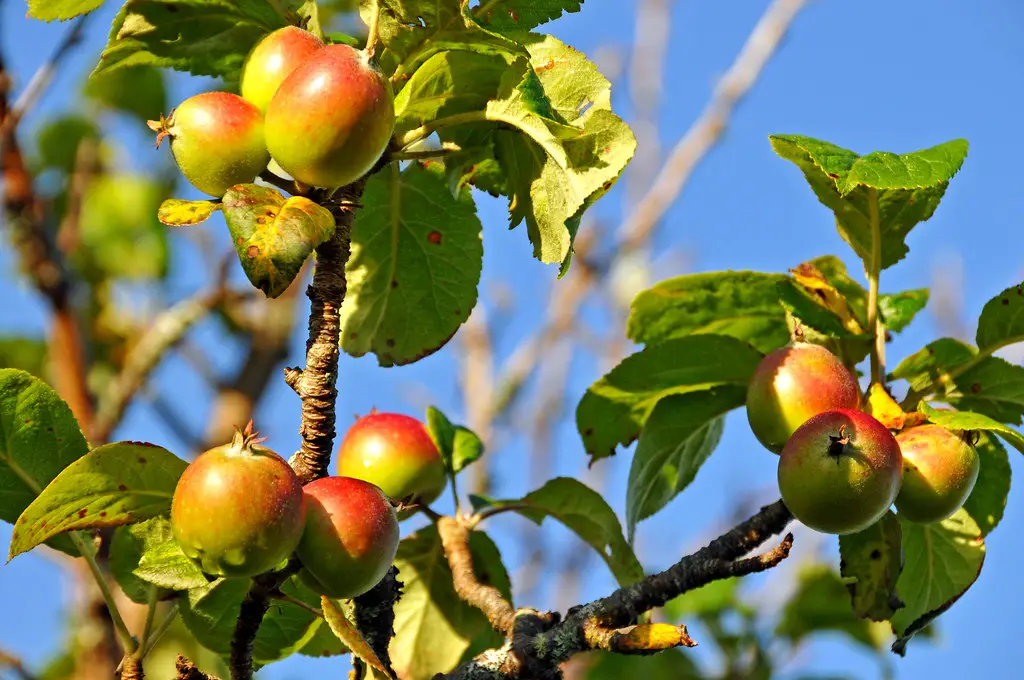Crabapple trees, celebrated for their stunning spring blossoms and colorful fruit, add visual delight to landscapes across various regions. These ornamental trees belong to the Malus genus, with various species and cultivars available to suit different aesthetic preferences and growing conditions. Crabapples bloom with beautiful flowers ranging in color from white to shades of pink and red, filling gardens with a fragrant perfume that attracts pollinators.
Besides their ornamental value, Crabapples play a role in culinary traditions, being used in jellies, sauces, and other delicious treats. They provide a tangy taste and a pleasant texture that complements various dishes. Beyond the kitchen, crabapple trees contribute to local ecosystems by providing food and shelter for birds and other wildlife.
Crabapple trees are not just a seasonal delight; their decorative appeal extends throughout the year. Their lush foliage in summer, vibrant fruit in autumn, and attractive form in winter make them an all-season standout in the garden. Now, let’s explore the specific details, care requirements, and growing tips for this appealing tree.
| Common Names | Crabapple, Wild Apple |
|---|---|
| Botanical Name | Malus spp. |
| Family | Rosaceae |
| Plant Type | Deciduous tree |
| Mature Size | 10 to 25 feet tall, 10 to 25 feet wide (varies by species) |
| Sun Exposure | Full sun |
| Soil Type | Well-drained, moderately moist soil |
| Hardiness Zones | 4 to 8 |
| Native Area | Northern Hemisphere, including North America and Eurasia |
Crabapple Care
Caring for a Crabapple tree involves regular watering, proper fertilization, pruning, and pest management. The tree requires a site with good sunlight and well-drained soil to grow to its full potential. Although Crabapples are relatively hardy, regular monitoring for diseases and pests helps in maintaining their vibrant appearance.
Proper pruning, particularly during the dormant season, not only shapes the tree but also improves air circulation, reducing the risk of disease. Similarly, selecting disease-resistant varieties can be a significant step in achieving a healthy and aesthetically pleasing tree.
Light Requirement for Crabapple
Crabapple thrives in full sun, where it can receive at least 6 to 8 hours of direct sunlight daily. Adequate sun exposure encourages robust growth, flowering, and fruiting.
Soil Requirements for Crabapple
Crabapple prefers well-drained, moderately moist soil with a slightly acidic to neutral pH. Proper soil preparation with organic matter can enhance the growing conditions.
Water Requirements for Crabapple
Regular watering is vital, especially during the first couple of years after planting. The soil should be kept evenly moist but not waterlogged to avoid root rot.
Temperature and Humidity
Crabapple trees are adaptable to a wide range of temperature conditions within their hardiness zones. They can tolerate cold winters and grow well in regions with moderate summer temperatures.
Fertilizer
An annual application of a balanced fertilizer in early spring can support the tree’s growth. Fertilizer needs should be based on a soil test to provide the necessary nutrients without over-fertilizing.
Pruning Crabapple
Pruning should be done in late winter or early spring to remove dead or diseased branches and maintain the tree’s shape. Selective thinning helps improve air circulation and sunlight penetration.
Propagating Crabapple
Crabapple can be propagated through seeds, cuttings, or grafting. Grafting is a common method used to maintain specific cultivar characteristics.
How To Grow Crabapple From Seed
Growing Crabapple from seed requires stratification, followed by sowing in well-prepared soil. Patience is necessary, as germination and growth from seed can be a slow process.
Common Pests & Plant Diseases
Apple Scab
Control with proper pruning and fungicides if necessary.
Fire Blight
Remove affected branches and apply appropriate treatments.
Common Problems With Crabapple
Poor Flowering
Often due to inadequate sunlight or improper pruning; ensure full sun and proper pruning techniques.
Susceptibility to Disease
Choosing disease-resistant varieties and maintaining proper care can mitigate this problem.
Pro Tips
- Select the right Crabapple variety to match the soil and climate of your region.
- Plant Crabapple in a location that accentuates its seasonal beauty.
- Regularly inspect the tree for signs of pests or diseases, and take prompt action when needed.
- Consider the tree’s size and form when choosing a planting location, providing ample space for growth.




